A Remote Developer’s Guide To Staying Sharp

The tech world’s rapid shift to location-agnostic work unlocked incredible flexibility for developers. Engineers are no longer tethered to rigid office confines; they can now code from anywhere with an internet connection — whether that’s a cozy cafe, a tropical beach, or even their bedroom.
But such freedom comes with productivity challenges. Without the structure of a steady workplace routine, remote developers who provide React.JS or other development services must exercise greater self-discipline when dodging distractions. On top of that, the always-connected nature of modern tech also promotes bad habits like perma-hustling instead of taking needed breaks.
By understanding common pitfalls and instituting some basic best practices, remote devs can sustain energy, drive, and ingenuity — no matter where their laptops roam.
The Pitfalls Of Remote Work
While remote work arrangements unlock incredible flexibility for developers, with great freedom also comes great personal responsibility. Remote developers face a host of potential productivity killers, including:
Distracting Environments
Cafes seem an ideal makeshift office, but loud music and clanging dishes can easily disrupt coding cadences. Even home offices host attention-grabbing pets, kids, and snacks that may derail progress.
Isolation & Disconnection
Solo work for extended periods often exacerbates communication gaps with teammates and managers, especially if there is a lack of shared physical space for quick conversation or question-answering. Developers may then waste time moving down ultimately unfruitful build paths.
Endless Availability Expectations
Geo-distributed teams mean colleagues across time zones may ring at odd hours. The always-on nature of messaging apps also tempts some employers to bombard devs around the clock, disrupting reasonable schedules.
Difficulty Tracking Time
With no set workplace hours or punch cards, some struggle to quantify the effort invested per project. That lack of visibility further enables overworking tendencies.
By understanding these hazards, remote developers can institute tactics to keep engagement and efficiency firing on all cylinders.
Optimizing Remote Work Environments
Laying the foundation for reliable productivity begins by designing an everyday workspace relatively clear of disruptions.
For remote developers, an ideal at-home office features:
- External monitor(s) allowing multiple browser tabs.
- Fast, reliable internet enabling uninterrupted data flows.
- Comfortable chair and desk relieving physical strain.
- Noise-canceling headphones silencing audible chaos.
- Snack drawer preventing mid-coding energy crashes.
Beyond physical setups, developers should confirm that household members respect when the office door is shut, signaling concentrated work time that allows no intrusions except in emergencies.
For those working in cafes or impromptu spaces, scope out spots offering:
- Stable Wi-Fi and 3-prong outlets.
- Booths shielding from clatter.
- Low-key energy without blaring music.
- Multiple seating options (think stools and soft chairs).
- Bottomless coffee top-offs fueling long build sessions.
Establishing separated professional environments eliminates many engagement distractions rooted in physical spaces themselves.
Maintaining Connectedness Remotely
Even though they aren’t in the same office, remote developers still need to establish alternate routines that promote camaraderie within the team. Smooth, cross-functional communication is still essential to overcoming difficult coding problems, and establishing simple routines can strengthen your connection with coworkers you might not often interact with in person.
For example, you can arrange daily 15-minute peer check-ins and direct non-urgent inquiries into team chat channels. Set aside time each week to evaluate your progress and identify any obstacles that require help. Learn about side projects that coworkers are working on, or share amusing anecdotes about the cities you visited while working overseas.
Maintaining standing one-on-one meetings with immediate managers will help you stay visibly aligned regarding current sprint goals and shifting organizational priorities, even beyond maintaining social bonds. Highlight key points from leadership meetings at the skip level in the appropriate Slack channels. Finally, gather the gang in virtual spaces like Gather or SpatialChat for occasional informal hangouts, gaming sessions, or impromptu brainstorming whiteboards — no agenda required.
The reality is that remote developers still need a community that creates bonds and strengthens distributed teams. Through ongoing lightweight conversations and touchpoints, both social and professional, you can nurture natural connections to combat isolation threats.
Setting Reasonable Availability Expectations
Remote developers should still value personal time off to avoid perma-hustle burnout. That means setting clear expectations with managers and colleagues about the core hours maintained for meetings and collaborative work. Late-night Slack debates may be invigorating for the night owls among us, but understand that teammates in earlier time zones can’t sustain midnight messaging marathons.
Similarly, establish designated hours for heads-down focus when you are minimally interruptible, so progress churning through hefty feature builds isn’t torpedoed. Update your Slack status labeling contexts like “Focus Mode,” “Off Hours,” and “Hit Me Up,” so others instinctively respect availability rhythms.
Though no longer tethered to the 9-to-5 grind, even remote developers need downtime, fully separating from work to recharge their creative energies. Set an out-of-office if going fully offline for vacation stretches. Log off apps at a reasonable hour on Friday to embrace the early weekend.
Boundaries ensuring ample rest beyond relentless coding sprints make for more sustainably productive remote work.
Tracking Efforts In A Quantified Workplace
With no timesheets or badge swipes in remote environments, some developers struggle to accurately quantify hours invested per project — a critical visibility gap for managers trying to scope and budget future work. Actually, between 3:00 and 6:00 PM, freelancers’ activity rates drop to 45%.
So, rather than tracking efforts purely from memory, utilize time-tracking tools like Harvest, Hubstaff, and Toggl to build automatic catalogs of work activity across apps and websites. Customizable tags and statuses document efforts — meetings, documentation, debugging a specific component — and grant detailed recapping abilities.
Integrate tracking directly into task management systems like Jira and Asana for unified visibility, tying efforts to tangible tickets. You can log any spontaneous collaboration or research detours under a “Miscellaneous” bucket tagged to the current sprint or project.
While it may seem like unnecessary administrative overhead, marking an activity’s start and stop times takes mere seconds and pays incredible dividends. Timelines derived from historical tracking data enable realistic forecasting for upcoming initiatives. The quantified logs also provide helpful evidence come review season.
Stay Sharp No Matter Where You Roam
By dodging common remote work pitfalls and instituting basic engagement rhythms, developers sustain energy, drive, and ingenuity no matter where they end up — on a sandy beach, in a cozy cafe, or at a kitchen table equipped to fuel the 155th cup of coffee. By following these tips, you can leverage the location flexibility unlocked by going remote without losing razor-sharpness in delivering for distributed teams.
